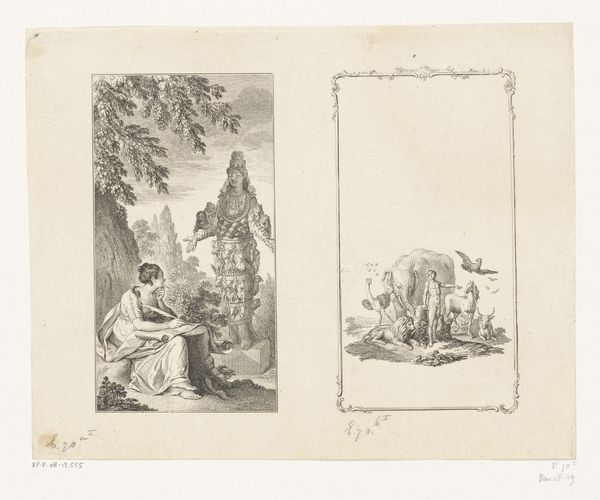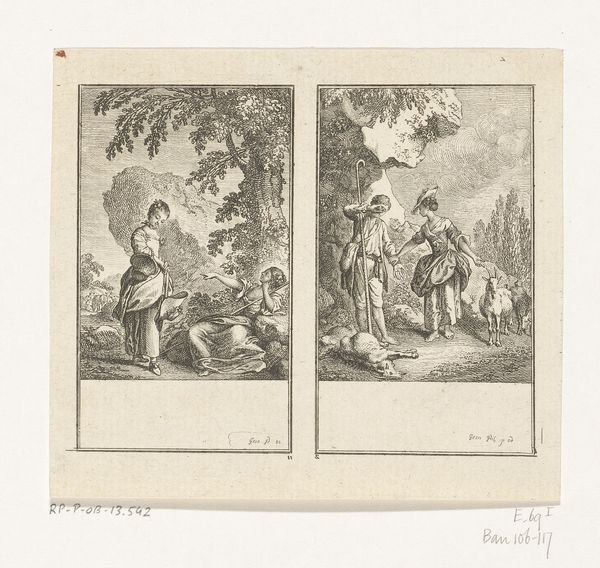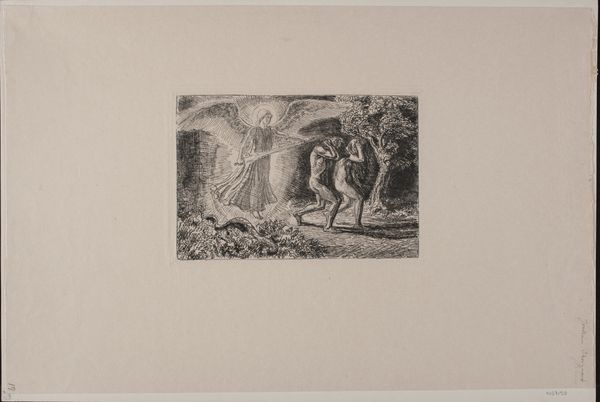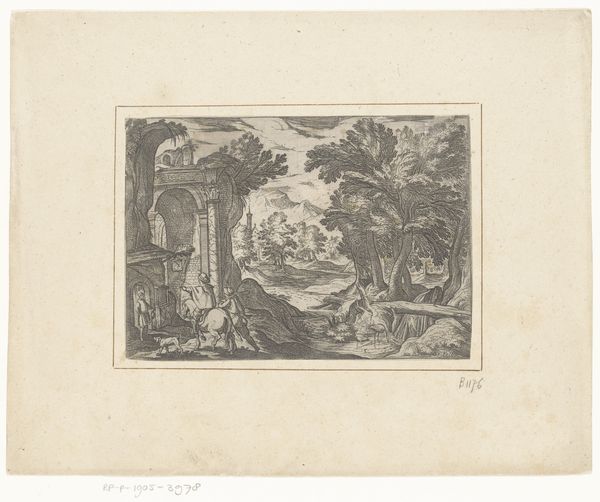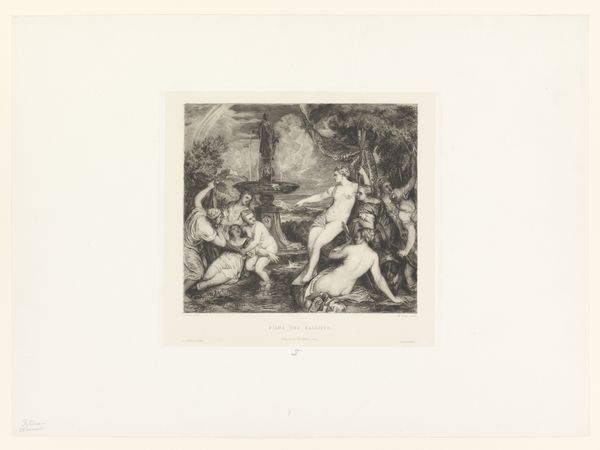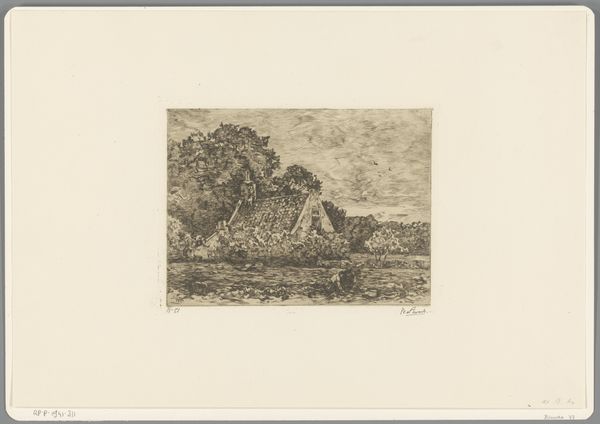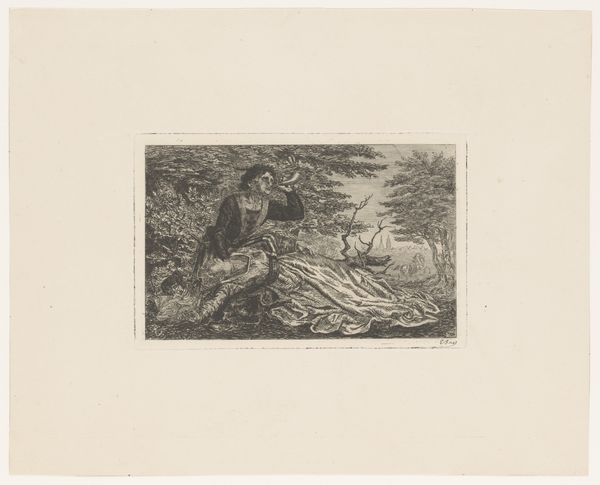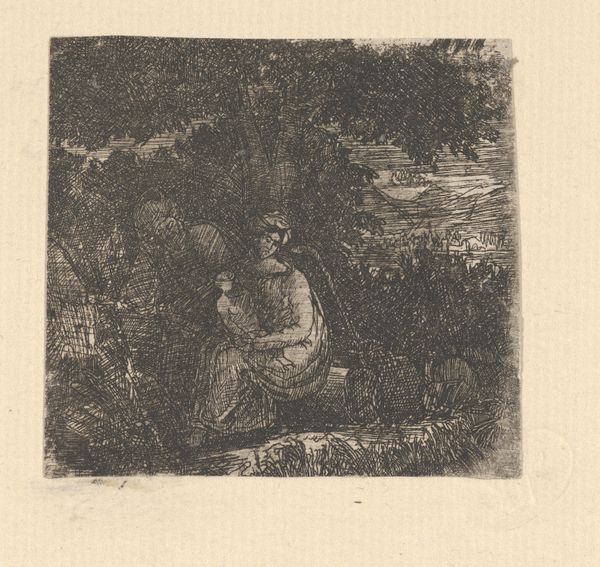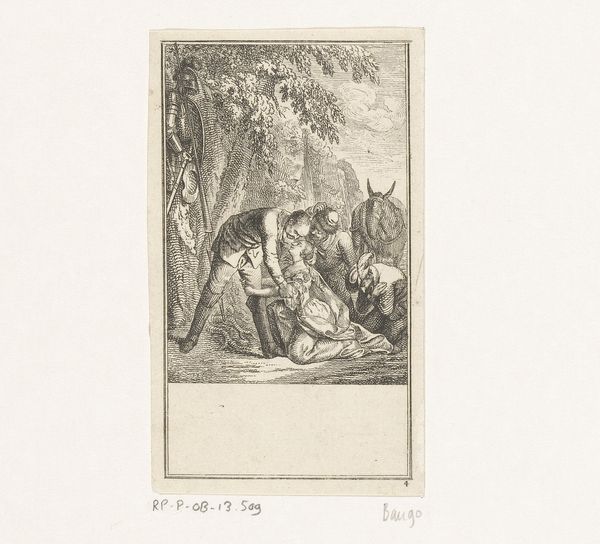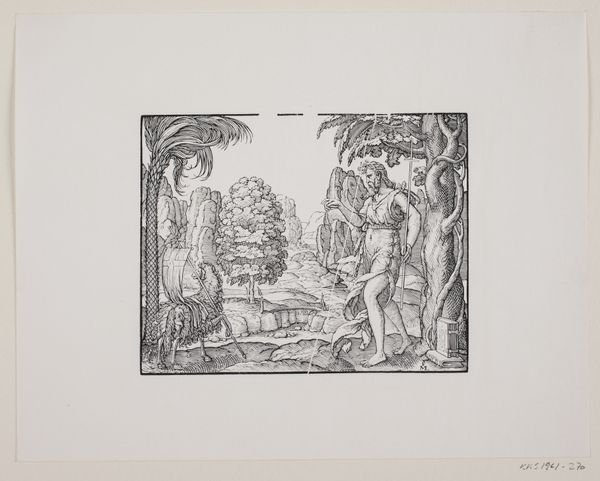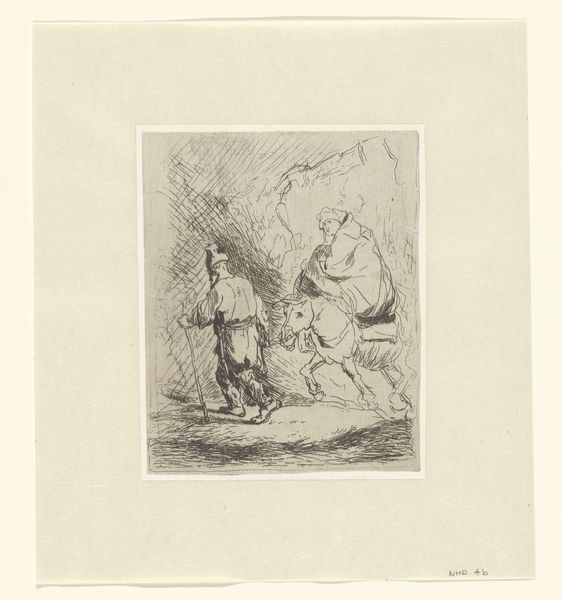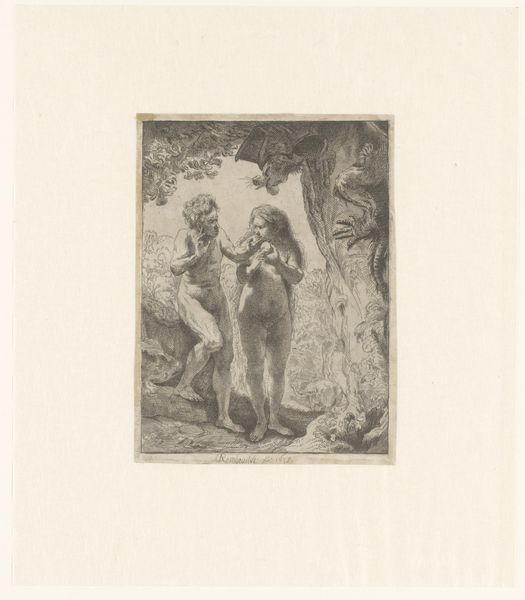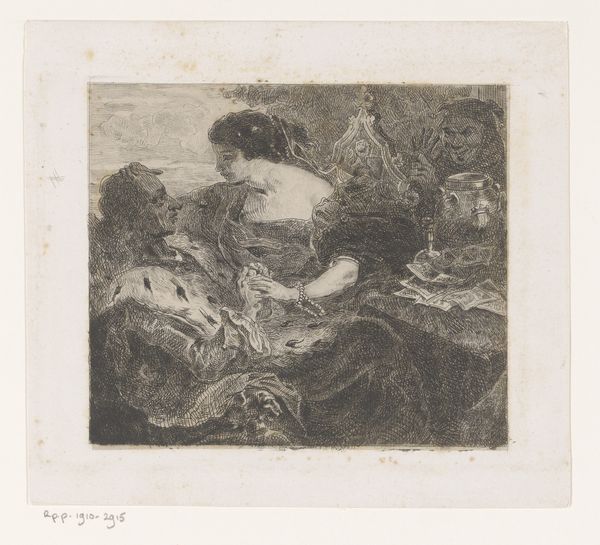
Dimensions: height 107 mm, width 123 mm
Copyright: Rijks Museum: Open Domain
Curator: Ah, look at this print— "Twee scènes uit de Idyllen van Salomon Gessner," or Two Scenes from the Idylls of Salomon Gessner, created in 1771 by Daniel Nikolaus Chodowiecki. Editor: It has a sweet, almost naive charm. Very delicate lines, isn't it? Makes me think of hand-tinted illustrations from old fairy tales. The idyllic theme feels very pronounced; it is literally in the title, of course. Curator: Indeed. Chodowiecki was known for his detailed engravings, and this one beautifully captures the Romantic sensibility of the time, though in miniature. Notice how he separates the space into almost two little stages. Editor: Yes, each vignette could be from different theatrical productions. On the left, there’s a musical duo enjoying a wooded paradise, but what grabs my attention is the rainbow in the second. How unusual. It feels like he’s specifically playing with artifice through both the content and his treatment of the material. Curator: Right! The rainbow lends this air of fantastical promise to an otherwise somewhat ordinary pastoral scene of courtship, if you think of how common these stories of lovers meeting in nature were back then. The material itself speaks to a specific moment in printmaking, where such detailed narrative scenes could be reproduced and consumed widely, driving trends in fashion, literature and the decorative arts. Editor: It's remarkable how much detail he achieves within the confines of engraving. Do you imagine these as something closer to illustrations intended for a wider circulation, rather than individual artworks? The type of image for widespread distribution in publications. Curator: Probably so. Prints were the democratic art form of their era, right? Spreading ideas, styles... Chodowiecki likely considered these illustrations as part of a larger cultural conversation, contributing to and shaping the tastes of the day through the medium. Editor: That focus on technique and dissemination shifts our view. It prompts us to look beyond this singular image as this moment and rather investigate the relationship to production of luxury commodities at the time. This helps us understand better the context of art history through cultural lenses that reveal much about life beyond these picture frames. Curator: Absolutely. Thinking of these engravings not just as beautiful images, but as tangible items reflective of material circumstances offers a whole new perspective on art in society. It challenges our very idea of "art," no? Editor: It does indeed. Well, it’s given me a whole new appreciation for seemingly delicate little scenes. Now I want to know what Gessner wrote about that rainbow.
Comments
No comments
Be the first to comment and join the conversation on the ultimate creative platform.
